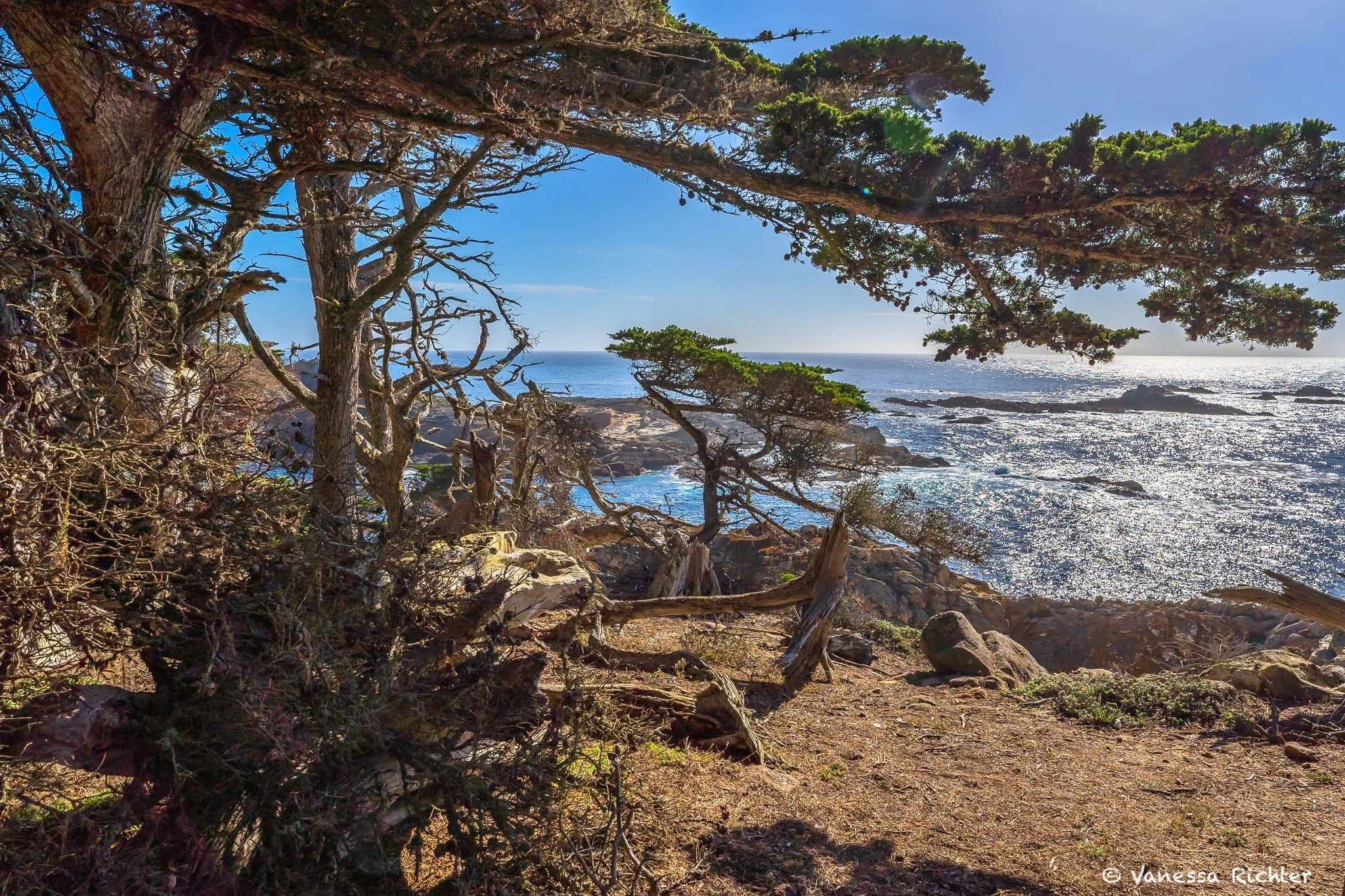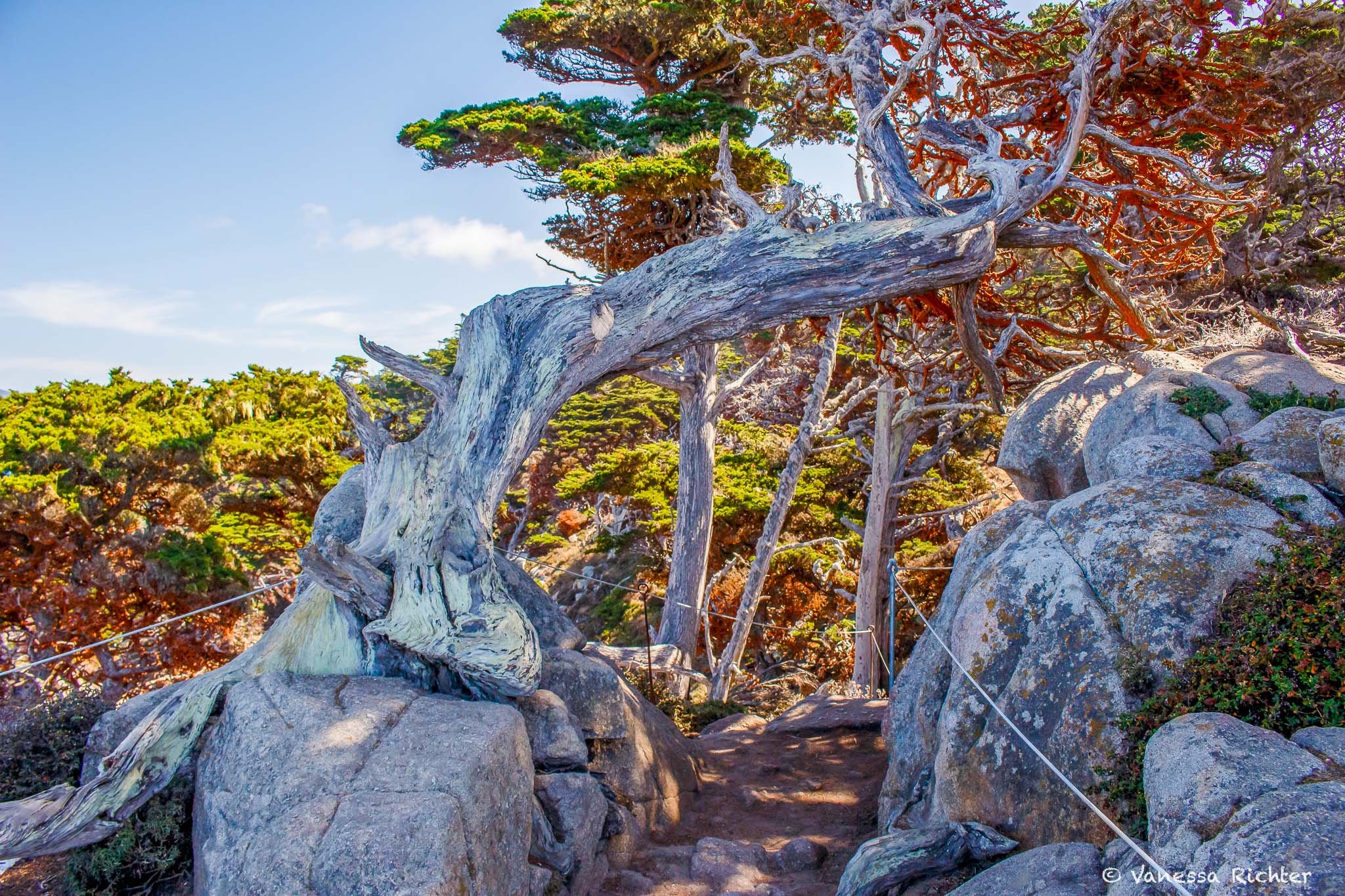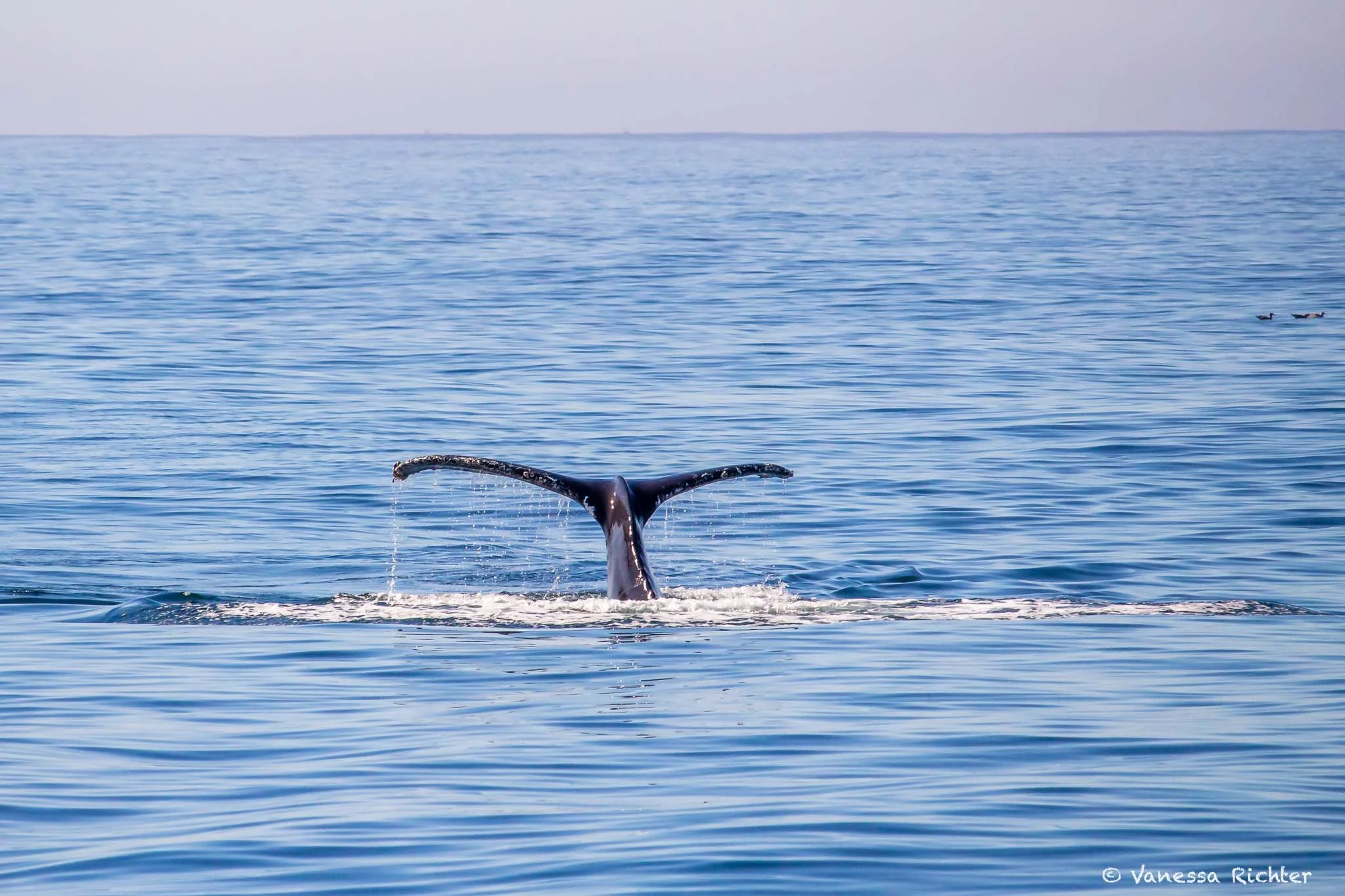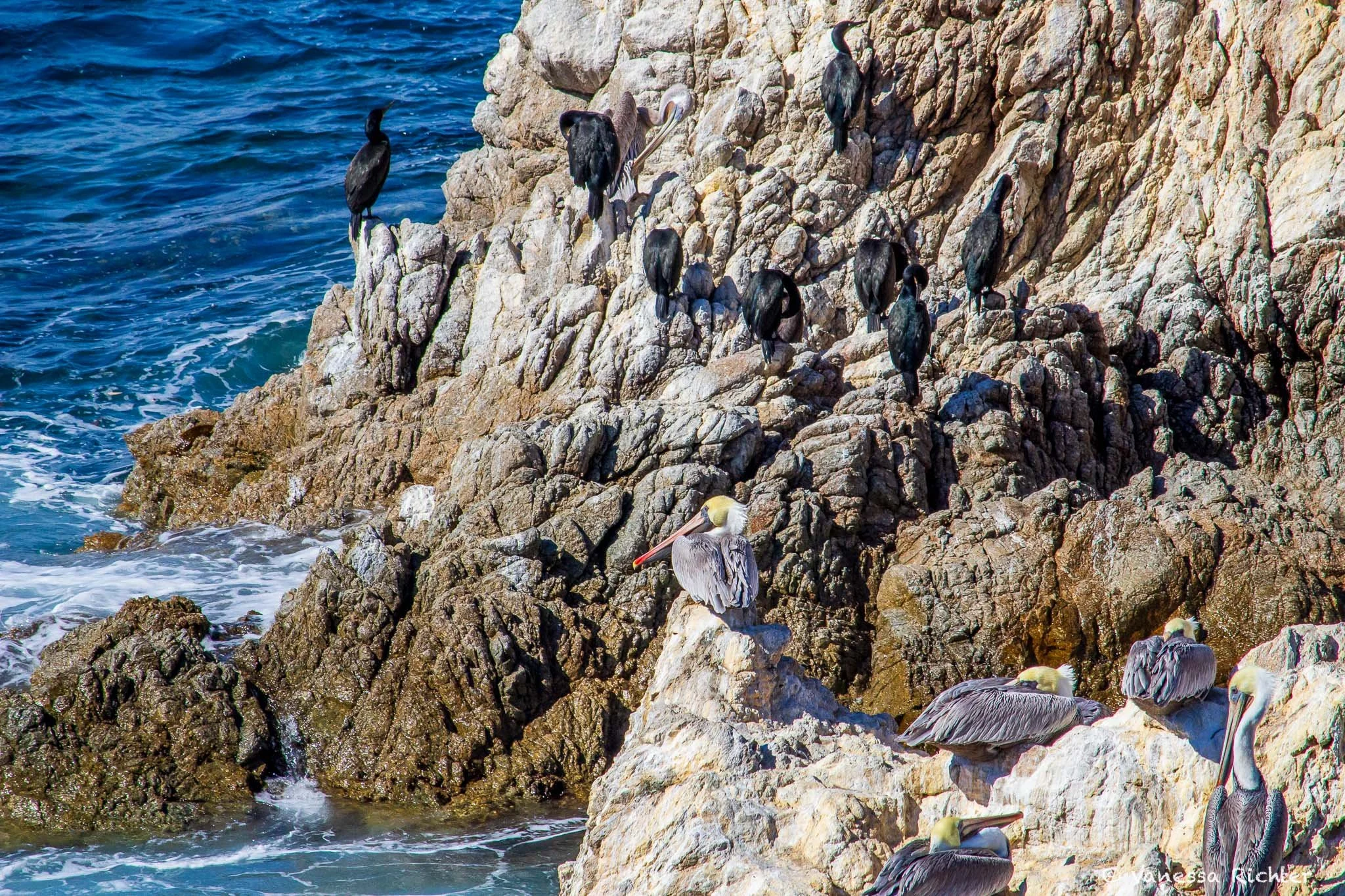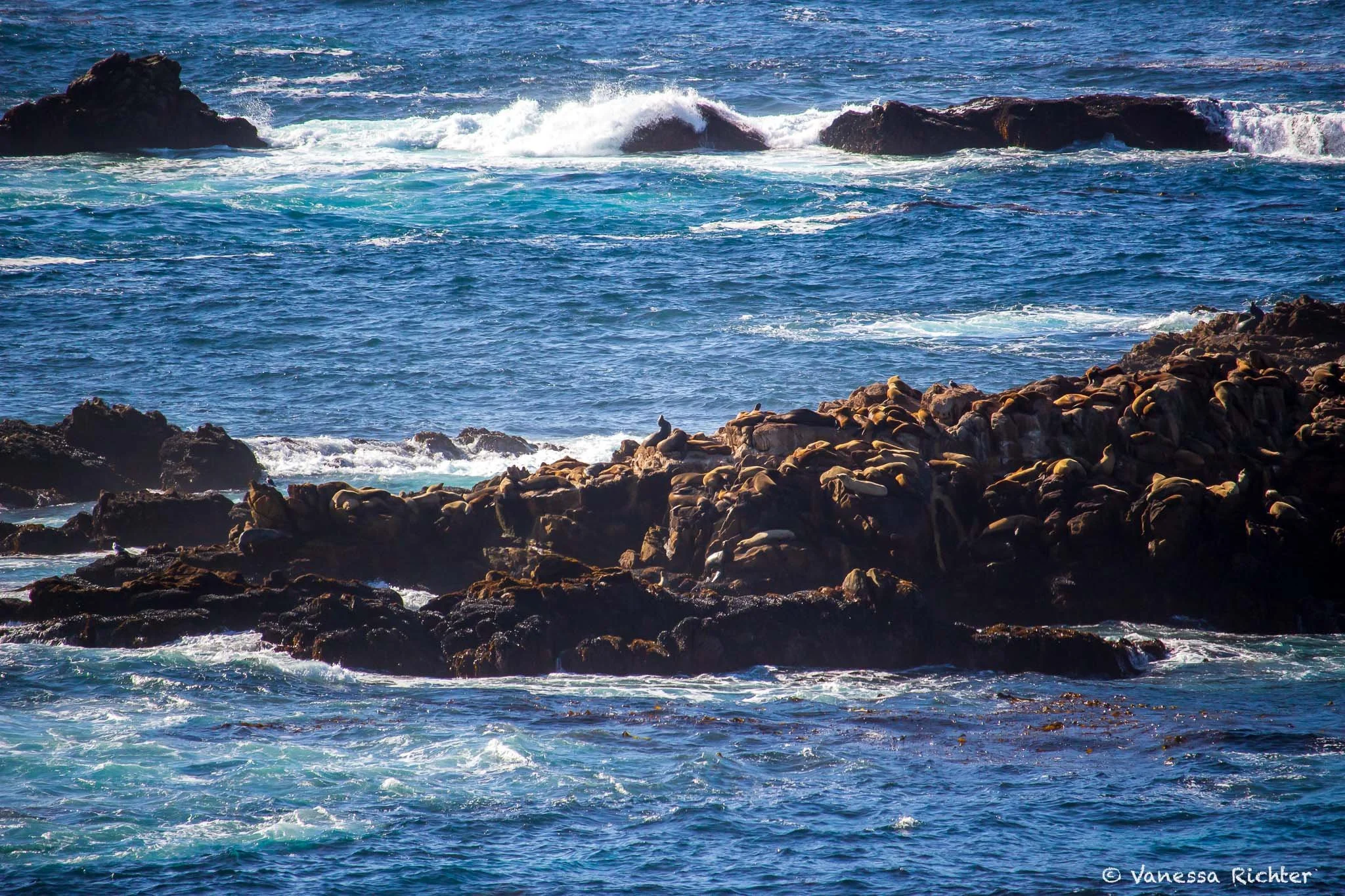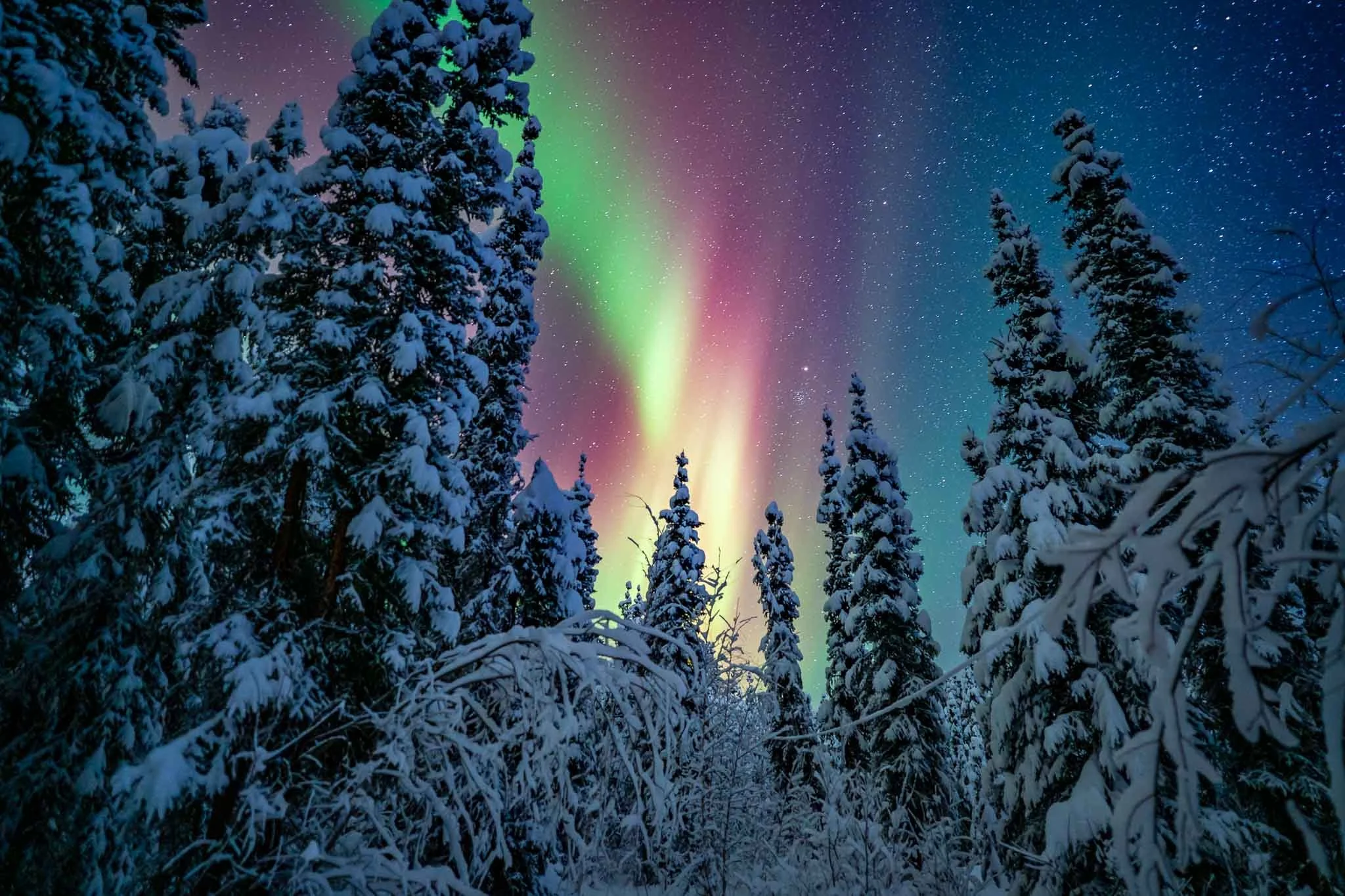Guide to the Best Short Hikes at Point Lobos State Natural Reserve
View over Gibson’s Beach — one of many beautiful beaches and coves — near Bird Island on the southern end of Point Lobos State Natural Reserve.
Point Lobos State Natural Reserve is a wonderful place to admire the immense biodiversity and beauty of the Californian Central Coast. There are numerous (short) trails within the reserve that allow you to immerse yourself in stunning scenery, ranging from coastal bluffs providing habitat for — among many others — harbor seals, sea lions, pelicans, and great blue herons, to dense forests with yellow-green lichens hanging mythically from the trees, often shrouded in fog.
In this article, I’ll share my favorite natural features that can be admired by venturing out on the trails of Point Lobos.
Just so you know: This post contains affiliate links, which means I may earn a small commission if you make a purchase through them — at no extra cost to you. I only recommend tours, gear, or services I truly believe in and think you’ll love too. Thanks so much for supporting my blog!
Table of Contents
Best Hikes & Key Activities
Before diving into my favorite activities at this magical place, let’s explore the history of how Point Lobos became what it is today. While serene places like this often seem "untouched" by humans most of them actually have a rich cultural history.
In a Nutshell: Cultural History
For thousands of years, Native Americans of the Ohlone have inhabited the Monterey Peninsula, where the Point Lobos State Natural Reserve is located. They lived in a tight relationship with the land as hunter-gatherers, for example, living off berries, urchins, seaweeds, or acorns.
In 1769, the arrival of Spanish colonizers changed the life of the Native Americans, landscape, vegetation, and animals drastically. The colonizers set up missionaries to Christianize the Native American people and their culture. Following California entering the Union in 1850, the state government carried out massacres targeting the Ohlone people. Natural resources, too, started to be exploited quickly. Livestock was brought to California, and Point Lobos was used for cattle ranching by various owners from the late 1700s to the early 1800s. The first commercial fishing fleet was formed in Monterey Bay in 1851 by Chinese sailors.
The owners of the land changed one more time in 1898/99 when Alexander and Satie Allan bought parts of what is today Point Lobos State Natural Reserve. They, however, did not intend to exploit the land more but to preserve it for the future. By 1933, the land became part of the new California State Park System. In the following decades, more acres of land were continually added to what is the Point Lobos State Natural Reserve today and thereby protected from further human development. Besides the land, also the waters around the Reserve became protected. In 1960, 750 acres of ocean created one of America’s first underwater reserves. The Point Lobos Ecological Reserve emerged from these efforts in 1973, prohibiting the taking of most marine resources for their protection.
Point Lobos State Marine Reserve (SMR) and Point Lobos State Marine Conservation Area (SMCA) were established in 2007, expanding upon the historically protected area.
Links & Additional Information
Please find out more on the websites of the California Department of Fish and Wildlife and California State Parks. Wikipedia also provides a good overview and links resources to dive in deeper into the history of the Ohlone and Native Americans in general.
Best Hikes & Key Activities
Today, Point Lobos State Natural Reserve is a protected area free from human development, allowing animals and plants to thrive once again. And, in my view, humans too! Places like Point Lobos are where we can truly reconnect with the natural world. There is much to discover at this special place — both culturally and naturally.
Note: This list is in no particular order, so 1 is not better than 5. Now, let’s dive in!
Admire the Monterey Cypress (Cypress Grove Trail)
The Point Lobos SNR is one of only two places in the entire world where Monterey Cypress grows in its natural habitat! You can admire the trees at the Cypress Grove Trail in the Allan Memorial Grove, which commemorates the incredible people who acquired the land back in the day on which the Natural Reserve stands today, protecting these impressive trees and all the natural beauty of this area from human development.
Despite its very narrow natural distribution nowadays — during the Ice Age, the tree is assumed to have been much more widespread across the central coast of California — you might have seen this tree in many settings all over the world. It is widely cultivated in parks, gardens, farms, and many other places around the world, with a similar moist and cool climate as in its natural range. It is amazing to see how these trees grow in the wild, without human interference, withstanding the often harsh conditions along one of the coolest stretches of the Californian coast.
Hardy Monterey cypresses grow along the rugged, element-exposed shoreline of Point Lobos.
Due to the pristine coastal conditions on Point Lobos, there is another very interesting feature to see on some of the cypress trees: the rusty-red appearing algae Trentepohlia (which is, in fact, a green algae, on which carotenoid pigments mask the green of the chlorophyll!). Seeing the glowing-orange algae on the bark of the cypresses for the first time may look concerning, but there is no need to worry. These algae aren’t threatening the trees at all. They are rare and only grow in very few places on Earth!
Find more information about the plant life in the Encyclopedia of the Point Lobos Foundation.
Rusty-red Trentepohlia algae are growing on numerous Monterey cypresses at Point Lobos State Natural Reserve. They pose no threat to the trees.
Trail Facts
The Cypress Grove Trail is just 0.9 miles long and is pretty much flat. You can find a trail description on AllTrails.
2. Whale Watching (South Shore Trail)
Admittedly, this one depends on luck and, in terms of whale species, the season that you’re visiting, but if these two align, it is an incredible place to observe these large mammals from the shore. The nutrient-rich waters at Point Lobos and the area around the reserve provide habitat for many kinds of whales.
No matter the season, you may be lucky enough to spot orcas, bottlenose dolphins, or Risso's dolphins along the coast. Humpback whales may be seen from spring to fall, and gray whales between winter and spring. During summer and fall, the largest mammal on earth — the blue whale — crosses these waters too!
It is such an amazing activity to just watch the ocean for any movements, get excited about splashes, and observe closely to determine if the splash was just due to a wave crashing against a low-profile rock, if it was a whale spout, or something else. During one of our visits in October, we were fortunate enough to spot a whole pod of dolphins traveling rather close to the shore. Seeing their typical jumping and observing how they naturally travel in their pods was an incredible experience.
Trail Facts
The South Shore Trail is an easy 2.2-mile out-and-back trail that follows along the coastline at Point Lobos SNR. On the south side, it can be continued into the Bird Island Trail. To the north, it follows off the Sea Lion Point Trail.
Binoculars are highly, highly recommended!
You may spot a sprout or movements from a rather far distance without them, but with them you can see the animals closer and observe their behavior. Binoculars can be lended out from docents at the Information Station if they still have some available. It is best to bring your own, or a camera with a zoom lens.
I highly recommend a lightweight pair of binoculars for hiking in general, as with them you can observe wildlife so much better — without getting too close and disturbing it.
Whales travel along California’s central coast, including Point Lobos. Even if you are lucky and they come relatively close to shore, you'll definitely get a better view with binoculars!
3. Bird Watching (Bird Island Trail)
Point Lobos is also a prime spot for watching birds of all kinds. Shorebirds find plenty of food in this protected habitat. Watch the pelicans travel over the ocean, rest on the rocks in groups, and observe great blue herons patiently hunting for their prey. Cormorants can be found in larger colonies on Bird Island. The nests of Brandt’s Cormorants occupy the island very close to the Pelican Point observation platform from April through July.
Besides the beautiful birds, you’ll also come across China Cove on this trail with its turquoise blue water embedded in the rugged shoreline, where you may also spot sea otters in the water or harbor seals lying on the beach!
Trail Facts
The Bird Island Trail is an easy 0.8 miles walk. The trail navigation can be found here.
This Great Blue Heron is waiting very patiently and appears like a statue while waiting for food.
Cormorants and pelicans gather on rocks offshore. Photo was snapped off the Bird Island Trail.
4. Admire the Lichens (Lace Lichen Trail)
Venture away from the coast inland to see what the frequent fog has brought forth from the trees. While you can see lichens hanging from the trees in many places all over the central and northern coast of California, I found this place to be one of the most impressive when it comes to lichen density and length. The stretch of forest on the Lace Lichen Trail is truly magical, with the yellow-greenish organisms hanging like lianas from the trees. Also, while it may seem as if the lichens conquer dead trees or harm them, this is not the case. The trees are totally fine with the lichens, which are a combination of fungus and green algae living in symbiosis. In fact, animals benefit from the lichens, such as birds using them as nesting material or deer feeding on them.
California has even honored the significance of lace lichen by making it the official state lichen!
Trail Facts
The Lace Lichen Trail is 0.8 miles long and flat, and you’ll need about 25 minutes to complete it. You can continue on other trails such as the Sea Lion Point/ Sand Hill Trail or Cypress Grove Trail from there.
Lace lichen hanging from the trees along the Lace Lichen Trail at Point Lobos State Natural Reserve.
5. Listen to & Watch the Sea Lions (Sea Lion Point Trail)
The sea lion’s barking can be heard from pretty much all over the reserve. Watching them is a little more difficult as they populate rocks offshore, which are rather far for the naked eye. So, as for whale watching, I highly recommend to bring binoculars or a camera with a zoom lens to be able to observe, and snap a photo of them!
Besides sea lions, there are many more marine mammals to be found in the reserve!
Harbor seals may be spotted from a closer distance, for example, on rocks close to the shore just above the water, or even on beaches.
Another cute creature that can often be spotted from the trails is the sea otter, which loves floating on its back when not munching on urchins, which helps keep the kelp forests healthy.
Trail Facts
The Sea Lion Point Trail (including Sand Hill Trail) is a short 0.4 miles long. It can be continued into the Cypress Grove Trail, South Shore Trail or Lace Lichen Trail.
These sea lions gathering on offshore rocks would have been hard to observe with the naked eye. I took this picture using a zoom lens at 250mm.
Harbor seals can often also be observed on beaches within the Reserve and generally along this stretch of coast in the vicinity of Point Lobos. This picture was taken on a coastal stretch very close to Point Lobos State Reserve.
Dive Deeper Into Point Lobos On A Guided Tour
If you want to dive deeper into the history of Point Lobos with a naturalist guide who knows the best spots to observe wildlife, you can also book a guided nature walk and learn more in a small group setting. Check below for availability and details.
Where to Stay
Cozy Stays in Carmel & Monterey
Whether you’re after a charming inn in Carmel-by-the-Sea or a waterfront hotel in Monterey, there are plenty of great places to stay close to Point Lobos. You’ll find everything from cozy cottages and beachside rentals to simple, comfortable hotels. I usually check a few booking sites to compare what’s available in the area.
- Carmel: A peaceful, walkable village with art galleries, wine tasting, and romantic B&Bs.
- Monterey: Livelier and often more affordable (as compared to Carmel), very walkable too, with a great coastal trail and lots of food options.
Know Before You Go
Access
- Point Lobos State Natural Reserve is located just off the scenic Highway 1, known as the Cabrillo Highway in this stretch.
- Especially if you intend to travel from the south, crossing the stretch of highway including Big Sur, or generally during the winter months, check road conditions first. The area around Big Sur, in particular, experiences landslides and road collapses frequently due to winter storms, often leading to road closures for several months due to repairs. Road conditions can be checked on Caltrans.
- Point Lobos is for day use only and charges a fee for entry.
- Conditions specific to the Point Lobos State Natural Reserve and other important information can be found here.
Trails
- The Point Lobos SNR comprises a network of numerous short trails, many of which have little elevation change and are easily accessible for visitors of different abilities.
- Completing the entire outer trail loop (not including the trails in between the circle, so to say) is 6.4 miles (10.25 kilometers) long and takes about 2.5 hours.
- A good overview of trails can be found on AllTrails, and a map including the trail system is provided by the Reserve here.
- You’ll also receive physical informational material about the reserve, including a map, upon entering the Reserve.
Best Time to Visit
- Spring and fall are the best times to visit as they often bring sunny and mild weather.
- September and October are the warmest months of the year and also mark the time when fog recedes from the coast.
- The winter months mark the rainy season, yet they are mild. That doesn’t mean, however, that it rains every day. Sunny winter days are a great time to visit too.
- Summers are dry in terms of rain, yet wet when it comes to fog! The waters around Point Lobos are influenced by cold currents close to the shore, leading to lots of dense fog in summer.
- At any time of the year, I highly recommend dressing in layers!
Bring Binoculars
- I highly recommend bringing your own pair of binoculars, as they will allow you to observe all kinds of animals much better—or even observe them at all.
- The sprouting of whales, as well as their short appearances, can be very difficult to observe without the aid of binoculars.
- Birds and sea lions resting on offshore rocks further from the coast can be much better observed with binoculars.
- At the Information Station, they can usually be lent, but it’s better to bring your own so you don’t rely on availability.
- A pair of lightweight binoculars is useful for wildlife watching in general, not only at Point Lobos!
Leave No Trace
- Dogs are not allowed anywhere within the reserve and cannot be left inside parked vehicles.
- No bikes on trails. However, they are allowed on the pavement.
- Collection is not allowed: All organisms such as shells, rocks, wood, plants, animals and all features of the reserve are protected by law.
- No drones.
- Smoking and fires of all types, including small cookstoves, are prohibited.
Please read more about the Leave No Trace Principles here. Let us stick to these principles to ensure that the magic of this beautiful place remains unspoiled for generations to come!
Keep On Reading: 2 Days of Outdoor Adventures in Monterey (Including Point Lobos)
More Tours & Outdoor Activities Near Point Lobos You Could Be Interested In
Follow the Adventure
Latest on the Blog
Search



